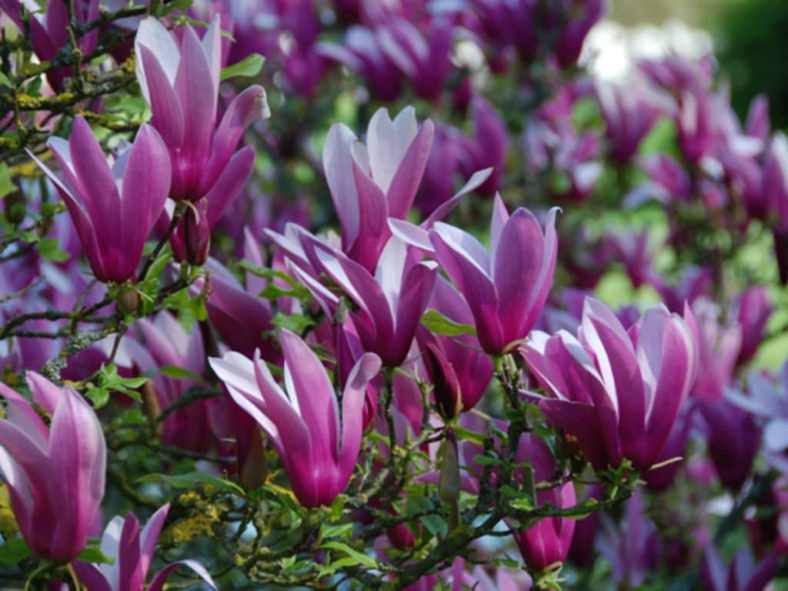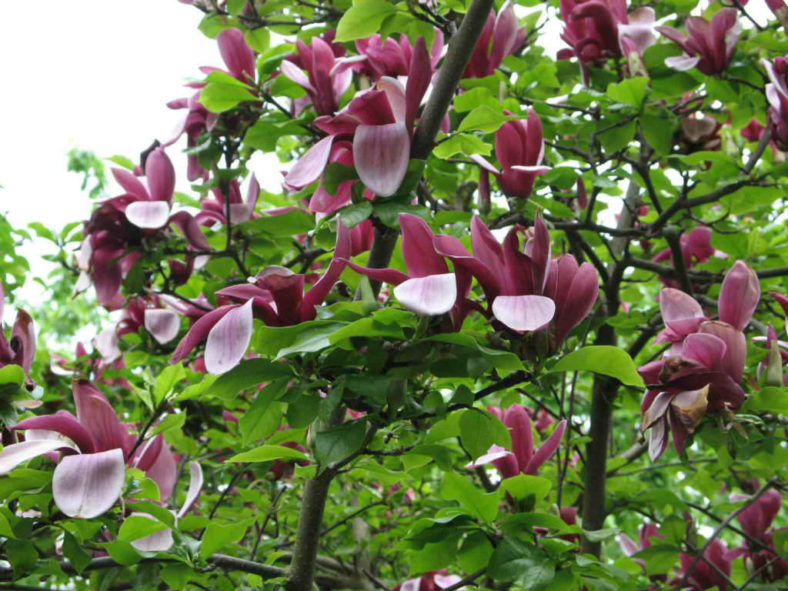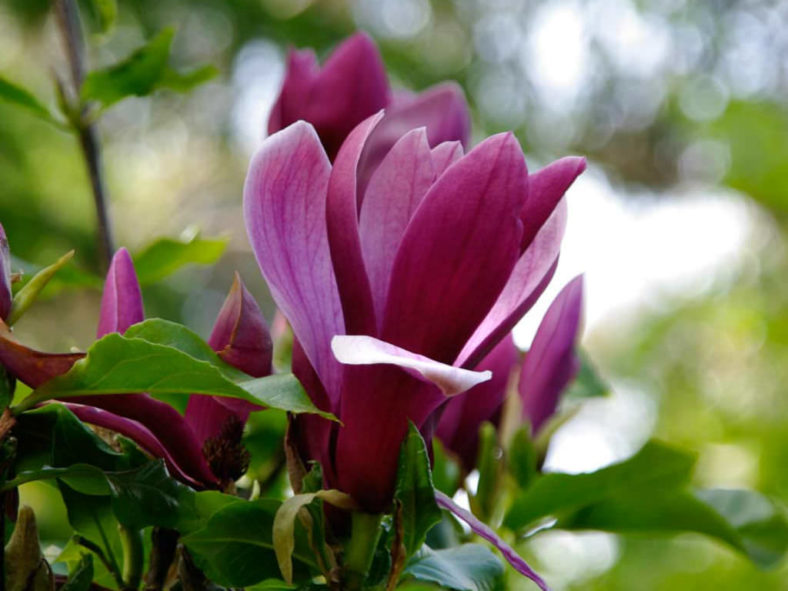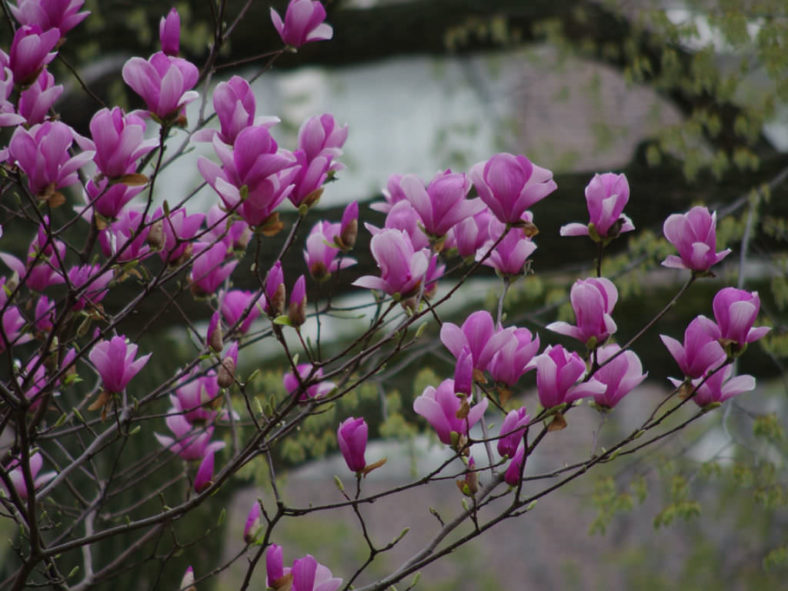Scientific Name
Magnolia liliiflora 'Nigra'
Common Name(s)
Black Lily Magnolia
Synonym(s)
Magnolia × soulangeana 'Nigra'
Scientific Classification
Family: Magnoliaceae
Subfamily: Magnolioideae
Genus: Magnolia
Subgenus: Magnolia
Section: Magnolia
Origin
Magnolia liliiflora 'Nigra' is a cultivar of Magnolia liliiflora.
Flower
Color: Deep purple
Bloom Time: Late spring
Description
Magnolia liliiflora 'Nigra' is a spreading, medium-sized deciduous shrub with glossy green elliptic, up to 8 inches (20 cm) long leaves. It grows up to 13 feet (4 m) tall. Flowers are erect, narrow, and fluted in the bud, deep purple outside, opening to reveal creamy-white stained purple insides. Flowering from late spring, this shrub continues to flower intermittently through the summer.

Hardiness
USDA hardiness zone 5a to 9b: from −20 °F (−28.9 °C) to 30 °F (−1.1 °C).
How to Grow and Care
Although different species of Magnolia can tolerate slightly different conditions, in general, they will do best with slightly acidic, moist, loose, well-draining soil. To mimic Magnolia's natural conditions, amend heavy soil with peat moss and compost. Grow best in Zones 7-10, depending on variety, with a few cultivars hardy to zone 5. Full sun to partial shade. Moist, peaty soil can help Magnolias tolerate the full sun. If you're pushing the limits of cold tolerance, avoid planting Magnolias in southern exposure since the leaves can be damaged by the winter sun, and flowers may open prematurely. Magnolias benefit from irrigation in the first few years, and then they are tolerant of moderate drought.
They need room to grow to their full mature size and width. So while looking small when first planted, over time, they'll grow to fill up space.
Some varieties of Magnolia don't bloom until 15 years old, so be sure to choose one that fits your needs and expectations. Grafted plants (rather than seed-grown) bloom sooner.
See more at How to Grow and Care for Magnolias.
Links
- Back to genus Magnolia
- Plantpedia: Browse flowering plants by Scientific Name, Common Name, Genus, Family, USDA Hardiness Zone, or Origin
Photo Gallery
Click on a photo to see a larger version.




